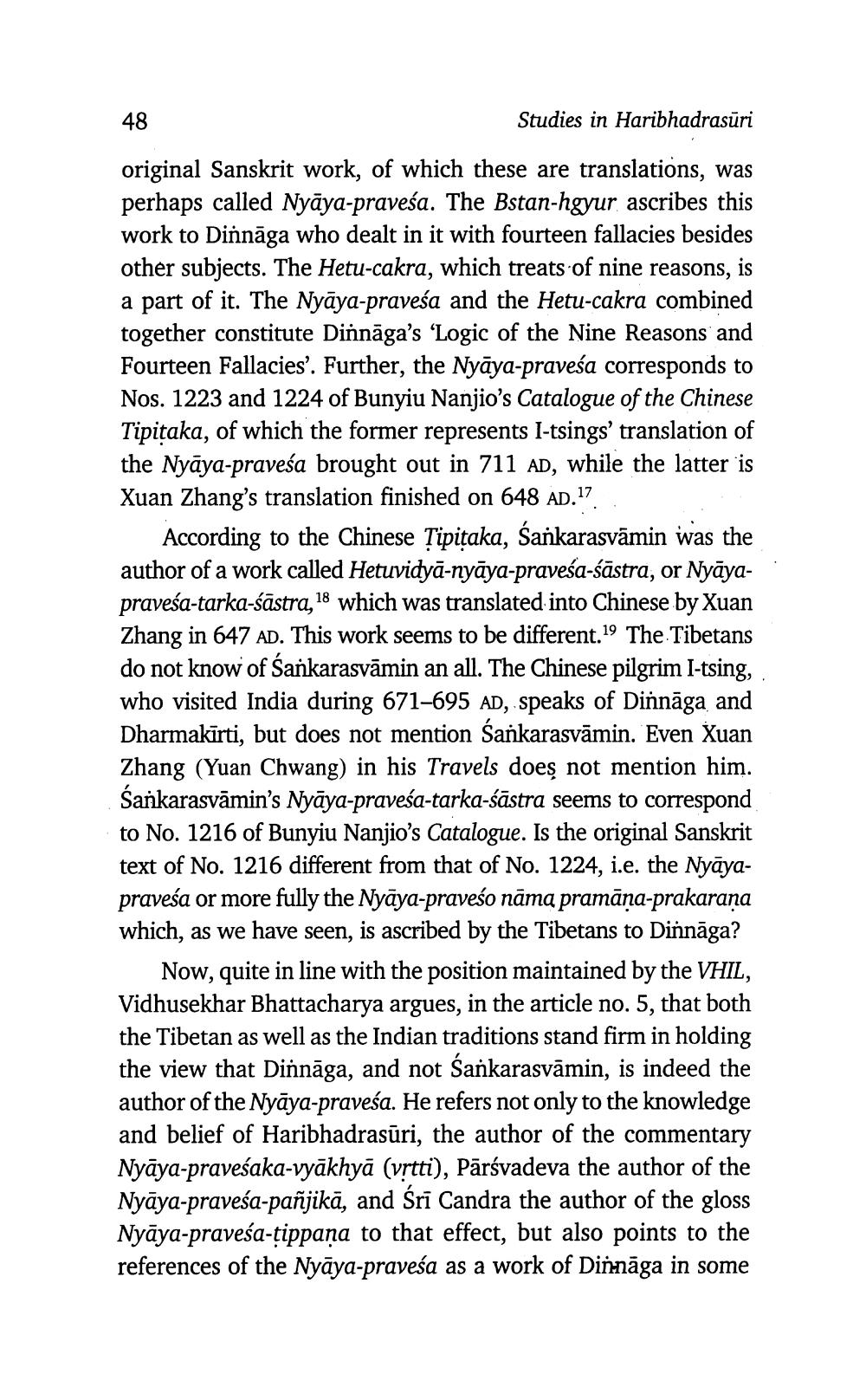________________
48
Studies in Haribhadrasūri original Sanskrit work, of which these are translations, was perhaps called Nyāya-praveśa. The Bstan-hgyur ascribes this work to Dinnāga who dealt in it with fourteen fallacies besides other subjects. The Hetu-cakra, which treats of nine reasons, is a part of it. The Nyāya-praveśa and the Hetu-cakra combined together constitute Dinnāga’s ‘Logic of the Nine Reasons and Fourteen Fallacies'. Further, the Nyāya-praveśa corresponds to Nos. 1223 and 1224 of Bunyiu Nanjio's Catalogue of the Chinese Tipitaka, of which the former represents I-tsings' translation of the Nyāya-praveśa brought out in 711 AD, while the latter is Xuan Zhang's translation finished on 648 AD.!?
According to the Chinese Tipitaka, Sankarasvāmin was the author of a work called Hetuvidyā-nyāya-praveśa-śāstra, or Nyāyapraveśa-tarka-śāstra, 18 which was translated into Chinese by Xuan Zhang in 647 AD. This work seems to be different.19 The Tibetans do not know of Sankarasvāmin an all. The Chinese pilgrim I-tsing, who visited India during 671-695 AD, speaks of Dinnāga and Dharmakīrti, but does not mention Sankarasvāmin. Even Xuan Zhang (Yuan Chwang) in his Travels does not mention him. Sankarasvāmin's Nyāya-praveśa-tarka-śāstra seems to correspond to No. 1216 of Bunyiu Nanjio's Catalogue. Is the original Sanskrit text of No. 1216 different from that of No. 1224, i.e. the Nyāyapraveśa or more fully the Nyāya-praveśo nāma pramāna-prakarana which, as we have seen, is ascribed by the Tibetans to Dinnāga?
Now, quite in line with the position maintained by the VHIL, Vidhusekhar Bhattacharya argues, in the article no. 5, that both the Tibetan as well as the Indian traditions stand firm in holding the view that Dinnāga, and not Sankarasvāmin, is indeed the author of the Nyāya-praveśa. He refers not only to the knowledge and belief of Haribhadrasūri, the author of the commentary Nyāya-praveśaka-vyākhyā (vrtti), Pārsvadeva the author of the Nyāya-praveśa-pañjikā, and Śrī Candra the author of the gloss Nyāya-praveśa-tippaņa to that effect, but also points to the references of the Nyāya-praveśa as a work of Dinnāga in some




